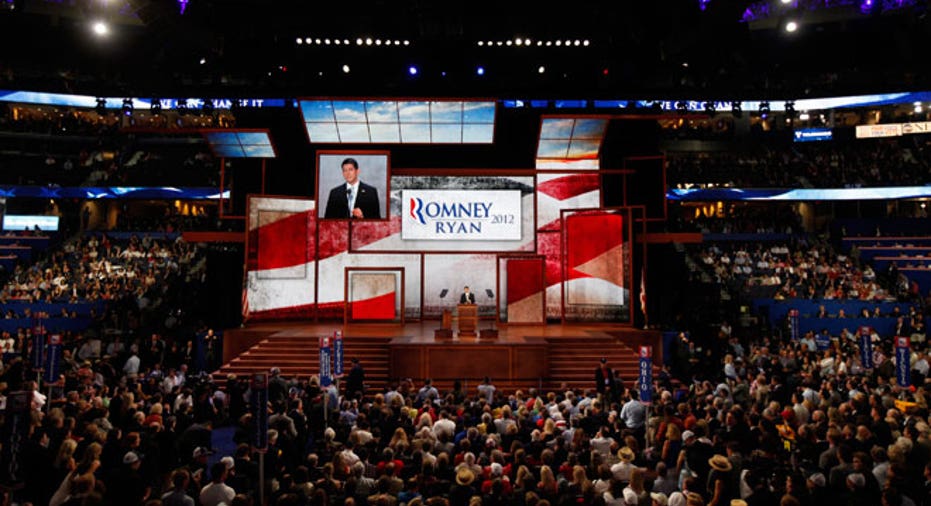The GOP's Fight for the Female Vote

Female voters are being courted by both sides of the political aisle, but the Republican Party is facing an uphill battle as women voters and the Democratic Party have been going steady for close to 30 years.
“The Kennedys made the dynasty,” said political historian Thomas Walden. “They were the first to recognize the power in this demographic.”
The Kennedy family used to host tea parties throughout Massachusetts that started with formal invitations, offered access to the candidates and an opportunity to dress up.
"Women voters appreciated the attention, up until that point no one paid attention to them,” Walden said.
Democrats have held on to the female vote ever since, and it's an important vote: 10 million more females than men voted in 2008.
"They hold great power, they hold the purse strings, make the buying and child rearing decisions and are the most attuned to the economic realities,” Walden says.
Women’s issues have been a heavy part of election platforms over the last 30 years, but the partisan divide has widened over recent comments from Republican lawmakers regarding birth control and abortions that have distanced female GOPers, and the Obama campaign has seized the opportunity to re-secure this demographic for November.
In 2008, 56% of the female vote went to Obama, but the tide shifted in 2010 with the weakening economy, and the Democrats lost control of the House.
The Republican Party has been steadily working to woo back female voters over the decades, whether it’s targeting hockey moms though vice presidential candidates, hosting shopping parties, or rallies. Sen. John McCain had little appeal to female voters in the 2008 presidential election until he selected mother-of-five Alaskan Gov. Sarah Palin as his running mate. John Kerry faced a similar problem in 2004 and named John Edwards as a running mate to solidify the demographic.
Ann Romney took the stage at the RNC on Tuesday night and gave a speech that focused on the role of mothers, noting "the working moms who love their jobs but would like to work just a little less to spend more time with the kids, but that's just out of the question with this economy. Or that couple who would like to have another child, but wonder how will they afford it."
Walden said the speech was “nice” but didn’t appeal to the crucial middle class female demographic.
"If you are in the working class, you can’t help but get the feeling that she is someone from the country club. She didn’t speak to the issues that hit home or give an inclination that she really does understand the problems and struggles,” he said.
Tuesday’s RNC keynote speaker, New Jersey Gov. Chris Christie, referenced his mother early in his speech calling her “tough as nails" and saying she "didn't suffer fools at all.”
Of course, it's unlikely Romney will win the female vote.
“Don’t forget the other side of the coin,” said Larry Sabato, director of the UVA Center for Politics. “Republicans are doing very well with men, but you have to remember women were 53% of the total turnout in the last election. More women vote and that puts more pressure on Romney to increase male support and reduce Obama’s female support.”
Grace-Marie Turner, founder of The Galen Institute, said the campaign should be doing more to show the governor’s female-friendly policies and to get people moving past the abortion and birth control headlines.
“He has consistently surrounded himself with women as governor and as head of head of the Olympics Committee, he needs to show that off. He looks for capability and he finds it in women, he needs to tell that story better,” Turner said.
To stand a chance at luring back the female vote, Walden said the GOP has to shift the debate away from social issues, and make it strictly about the economy.
“Working-class women are not doing particularly well under Obama -- this is what the Republicans have to hammer home," he said. "If the argument is on cultural issues, the GOP will lose. They need to steer toward pocket-book issues.”
Experts expect the rhetoric targeting female voters will only increase as Nov. 6 approaches.
“Most people are dug into who they are going to vote for already; the hard, honest-to-goodness undecided voters are only 5%. That is uncanny, but this election will be decided well within 5% so you can't dismiss anything, even if it just effects that small percentage,” said Sabato.